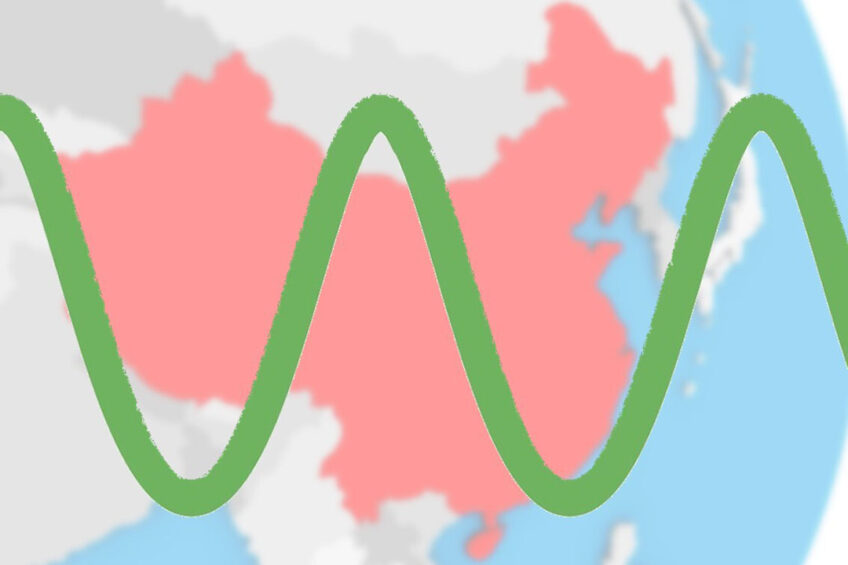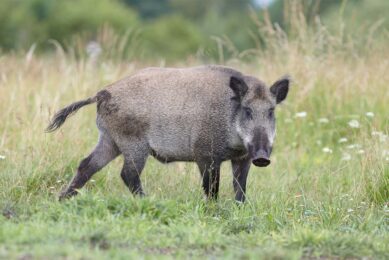Quarterly update: China’s pig cycle is felt across the planet

With half of the world’s pigs within its boundaries, China has a profound impact on pig prices on the planet. In the aftermath of the ASF crisis, many countries rushed to fill the Chinese voids – and now China is restocking its herds, the demand from the Far East drops. The result is low prices virtually everywhere, writes pig market expert Dr John Strak in his quarterly update.
In early July this year I ended my regular commentary on the global pork market by saying, “…. the chart (for the global pig price cycle) suggests that a turning point is unlikely before October… The caveat is China – if exports to that market drop sharply that might be enough to pull global pig prices down as fast as they went up. As ever, it seems, it’s all about China.”
And now that we have arrived in final quarter of the year we can see that China has indeed sent a tremor through the global pig and pork market. A turning point in global pig prices is just about with us and China’s demand for imported pork has collapsed. Even though it appears that the supply of pigs in North America and Europe is contracting, the collapse of domestic pig prices in China as a wall of pigs comes to market there may have been the reason why global pig prices have weakened in the major exporters’ home markets.
Figure 1 illustrates these points. The global pig price index has slowed its upward movement and is about to turn down. The weekly rate of change in the global pig price index has moved from high positive percentages to being only just positive (+0.02%). Next month the index will be in negative territory – we will enter the downward phase of the cycle.
Lowest point of Chinese pig slaughter
Another bit of crystal ball gazing that I did in July was to estimate when the Chinese pig sector will reach the lower end of its normal slaughter levels. I suggested that this would occur by the end of 2021.

Figure 2 presents the monthly hog slaughter data for China and it shows that this lower end of the kill number range has been reached in the slaughter data. Slaughter numbers have jumped, not because of African Swine Fever (ASF), but because feed and energy prices and, mostly, the size of China’s supply response to ASF have surprised everyone. The projection of kill data beyond December 2021 in Figure 2 should not be taken seriously – a feedback loop on supply in China will be underway in the 4th quarter of 2021 as pig prices collapse: slaughter numbers will fall back.

The mother of pig price cycles
In effect, China’s pig sector is in the middle of the mother of all pig price cycles and we are seeing boom and bust being played out in real time. Figures 3 and 4 illustrate what has been happening to Chinese weekly deadweight pig prices. Chinese producers and investors in the pork value chain in China have had their fingers seriously burnt. And this is the case whether these actors are large or small players. The larger commercial units will be better able to ride out the financial losses but they will still be hit hard. Those larger players are often part of large conglomerates with wider commercial interests and there may be ripples outward to other sectors – especially in local and regional circumstances.

Table 1 shows how US farmers have reacted to declining prices in the 2nd and 3rd quarter of 2021. The breeding herd in the United States is down by over 2% according to the September census. (Similarly, the EU’s breeding herd had declined by about 1.5% in June 2021.)
Hog prices in the United States
I had expected US hog prices to be firmer in the 2nd half of 2021. Figures 5 and 6 present the daily hog price data through to the end of the 3rd quarter. These prices have been higher than last year and have followed the normal seasonal pattern but the fall from their peak level in May 2021 has been sharp and uninterrupted.

The charts show how steep the fall in US hog prices has been. The US economy has made a reasonable recovery from Covid-19 and lockdown policies do not seem to be a major obstacle to appetites, employment or growth but US hog farmers are reported to be suffering from PRRS in their herds. This disease and uncertainties about feed prices and export markets may have sapped their confidence. The discovery of ASF in the Dominican Republic and Haiti will not have helped their outlook.

EU pig farmers are not inclined to expand
I noted in my July column that the EU’s pig farmers were not inclined to expand – ASF, the volatility of prices and low margins were not encouraging a positive outlook. The EU pig price chart shown as Figure 7 shows volatility but also shows signs of levelling off. But prices are weak and, at these levels, most EU farmers are losing money.

The collapse of China’s demand for pigmeat imports in the 2nd and 3rd quarter will have been a heavy blow to the European pig sector which has not fully recovered from Covid-19 – either on the demand side or the supply side. In the latest census results, only Spanish and Danish farmers seemed inclined to hold their breeding herd numbers steady or to increase them. All other major pig producing member states were cutting back.
Supply side of pig industry is not robust
Reports of Porcine Reproductive and Respiratory Syndrome (PRRS) incidence in the USA, the ongoing presence of ASF in China and China’s hog cycle, and the possibilities of ASF infections crossing from wild boar to commercial pigs in Europe or reaching America, mean that the supply side of the global pig industry is far from robust.
Pig producers and processors have the worst of both worlds in front of them. In the short and medium term supply is contracting or likely to contract because of low margins, disease, or the mechanics of the hog cycle. Prices, however, could yet recover strongly if producers contract too much and/or post-Covid demand comes back quickly and in strength.
The premium for local pork chains
A global answer to the questions raised by the various scenarios isn’t easy to compute. It’s likely that, against a background of global gloom and boom individual countries and regions will work out their own recovery, or their return to misery. Global trade (globalisation) could once be relied upon to smooth out these disparate effects but with major problems in ocean freight activity, Covid, animal disease and geo-politics in play we don’t have the usual tools to help restore equilibrium.
Globalisation and global trade used to offer businesses a more certain environment since supply chains could adapt and flow around regional problems. For a variety of reasons, those responses are less easy to put into play now and there will be a premium put on resilient local supply chains.
 Beheer
Beheer








 WP Admin
WP Admin  Bewerk bericht
Bewerk bericht